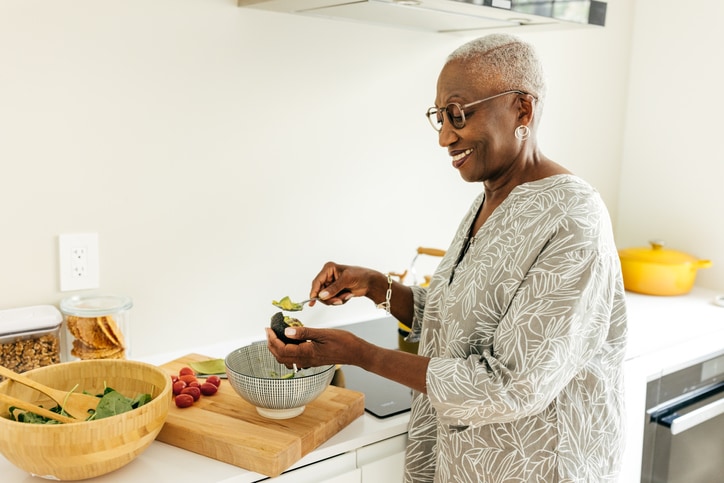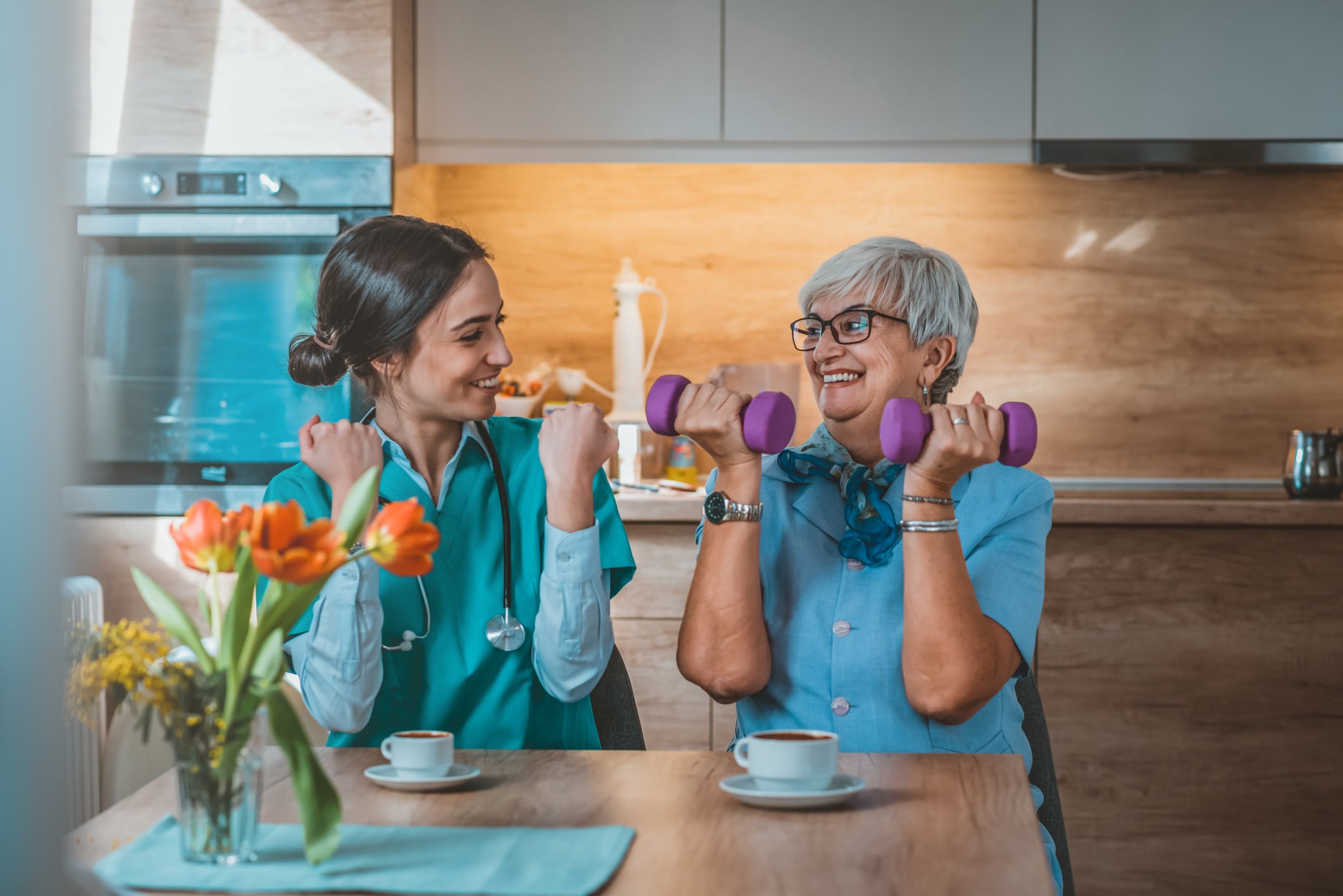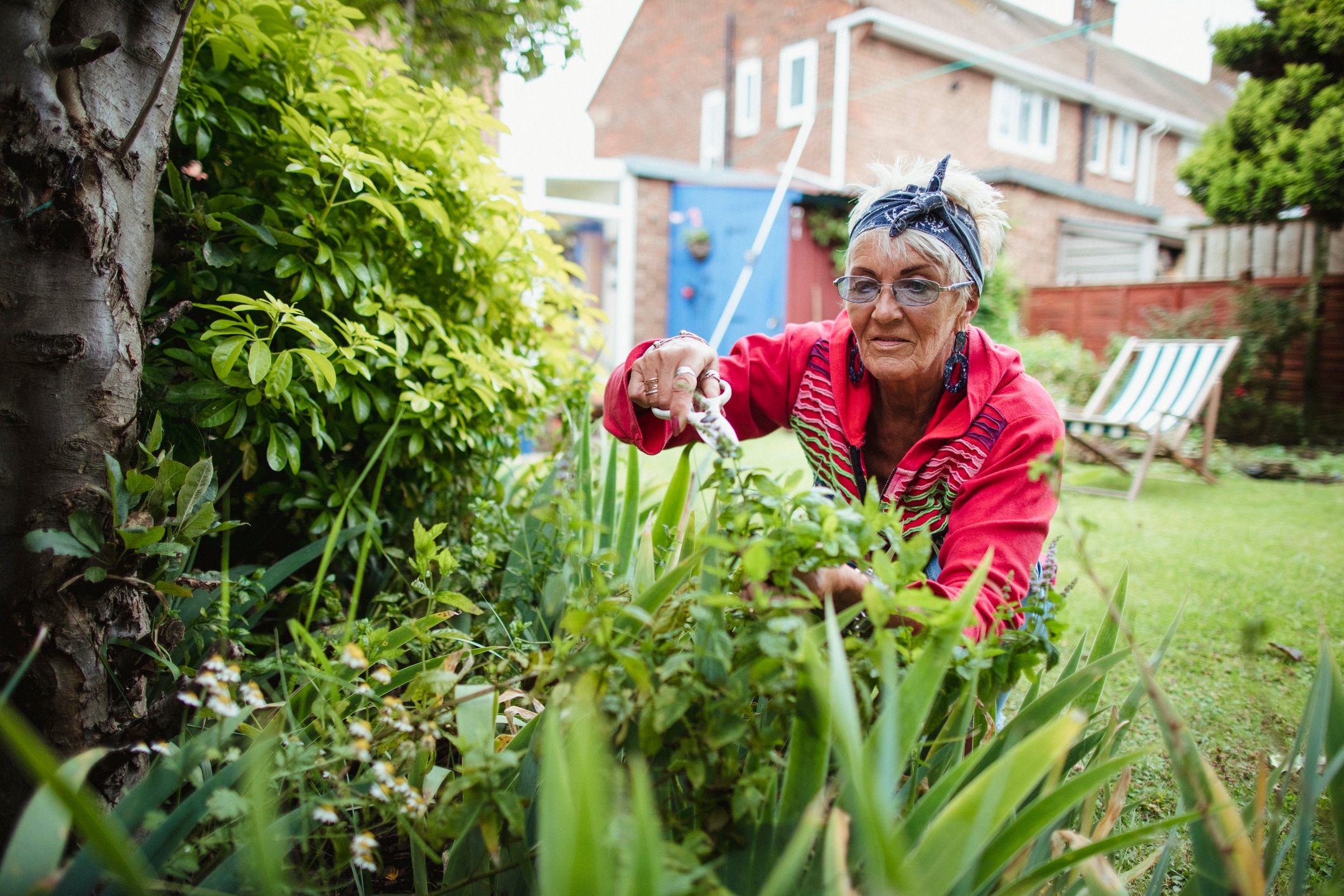In this article
It unlikely comes as a surprise that many foods today — mainly of the packaged, “easy” variety — are laden with sodium. And while sodium is an essential mineral, it can quickly turn into the edible embodiment of “too much of a good thing” — particularly for the older population.
“People of all ages need to be aware and control their sodium intake, but for older adults, it’s even more critical,” says Kristen Hruschak, registered dietitian and owner of Aging Well Nutrition Services. “Too much sodium can seriously impact their health, especially concerning their heart and blood vessels.”
Whether you’re looking to reduce your own sodium intake or that of the person you care for, read on to see our expert-backed list of easy low-sodium meals for seniors (that are big on flavor), as well as answers to popular questions about everyone’s favorite salty seasoning.
Key takeaways
- Older adults need to be particularly careful about their sodium intake, as too much can impact their health, especially their heart and blood vessels.
- According to the American Heart Association, the ideal sodium intake for adults is no more than 1,500 milligrams per day.
- There are tons of delicious, low-sodium meals for older adults (see below) for breakfast, lunch and dinner.
Sodium and seniors: the basics
Sodium gets a bad rap, but it’s crucial for certain functions, such as balancing fluids and making muscles work right, Hruschak explains. However, when folks have too much sodium (which is an element in salt, btw, not salt itself), problems can arise.
“Consuming excess sodium can raise blood pressure, which increases the risk of heart disease and stroke,” Hruschak says. “Therefore, older adults must keep an eye on and manage their sodium intake to keep their blood pressure in check.”
“Consuming excess sodium can raise blood pressure, which increases the risk of heart disease and stroke.”
— Kristen Hruschak, registered dietitian and owner of Aging Well Nutrition Services
Additionally, high sodium levels are linked to losing calcium, Hruschak continues, “which is particularly important for older adults who are at a higher risk of osteoporosis.”
“Calcium is crucial for strong bones,” she says, “and too much sodium can interfere with calcium absorption, leading to bone loss.”
What is a good sodium level for senior citizens?
According to the American Heart Association, an ideal daily sodium intake is “no more than 1,500 milligrams (mg) per day for most adults.” The average American, for reference, eats more than 3,400 mg. And about 40% of that sodium, according to the Centers for Disease Control (CDC), comes from the following foods:
- Cold cuts and cured meats.
- Pizza.
- Burritos and tacos.
- Soups.
- Savory snacks (chips, crackers, etc.)
- Chicken.
- Egg dishes and omelets.
- Breads, rolls and sandwiches.
- Cheese.
“It’s also important to remember that while it might be beneficial to limit sodium, you do not want to completely eliminate it from your diet,” notes Daisy Mercer, a registered dietitian and the in-house nutritionist for MyFitnessPal. “The body requires about 500 mg of sodium each day to function properly.”
Easy low-sodium meals for seniors
The best way to keep meals low in sodium is to make them at home, Hruschak notes, adding that “whole, unprocessed ingredients limit the amount of sodium at each meal.” She also recommends using herbs and spices to flavor food instead of salt.
Low-sodium breakfast ideas
Both Mercer and Catherine Gervacio, a registered nutritionist-dietitian and certified exercise nutrition coach, recommend the following ideas for low-sodium breakfasts:
1. Smoothie with fresh fruit, veggies and yogurt.
2. Egg white quinoa bowl with veggies.
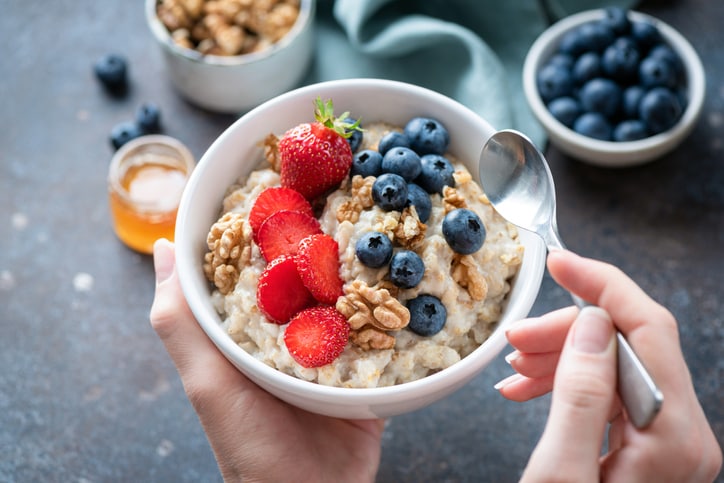
3. Oats with fresh berries.
4. Kale egg-white quiche with sweet potato crust.
5. Raspberry smoothie bowls with pears and pistachios.
Low-sodium lunch ideas
Yelena Wheeler, a registered nutritionist-dietitian in Los Angeles, suggests the following easy low-sodium meals for seniors for lunch:
6. Salads with a low-sodium dressing and low-sodium protein source, such as fresh cut chicken, beef, fish, eggs or dried beans.
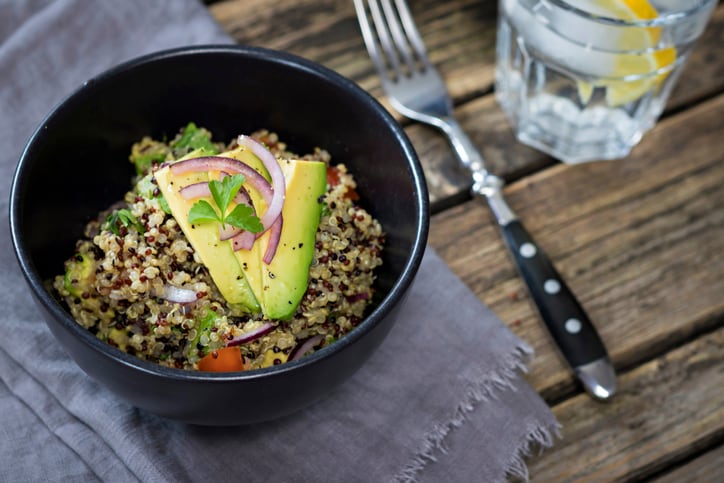
7. Quinoa and vegetable bowl.
8. Low-sodium soup with low-sodium crackers.
Low-sodium dinners for seniors
According to Gervacio, low-sodium dinners generally include something along the lines of a “plate of lean proteins flavored with herbs and spices, coupled with steamed vegetables and quinoa.”
Here, a few expert favorites for dinnertime:
9. Thai curry tofu over sweet potatoes.
10. Beef tenderloin over rice pilaf.
11. Slow cooker chicken adobo with pineapple.
12. Baked fish with roasted vegetables and potatoes.
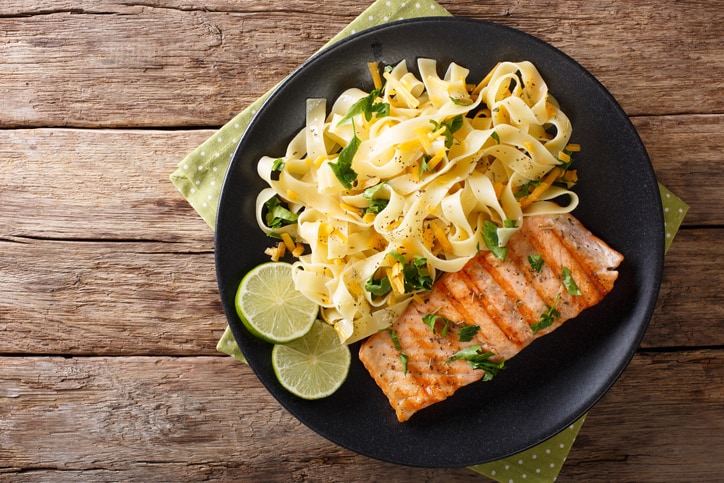
13. Pasta with salmon.
14. Salmon and Spinach Frittata.
Low-sodium snacks for seniors
For those times in between, here are a few expert-recommended snack options that are lower-sodium:
15. Unsalted nuts.
16. Unsalted seeds.
17. Cottage cheese.
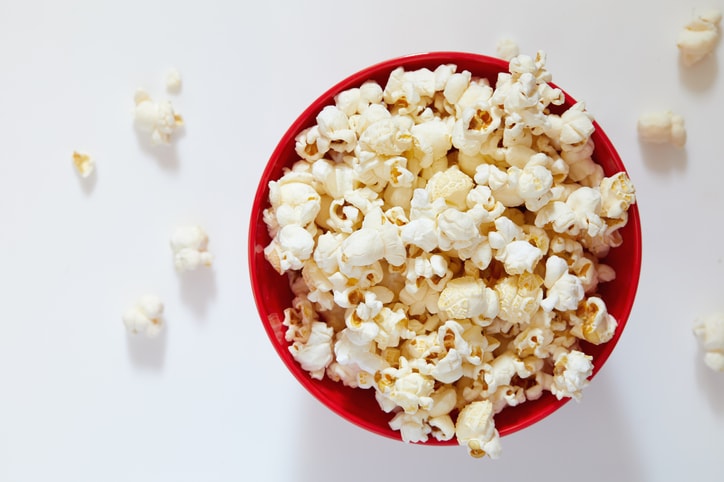
18. Air-popped popcorn.
19. Fruits.
20. Veggies.
What are surprising low-sodium foods?
If you want to get creative in the kitchen and whip up a few recipes of your own, here are some low-sodium foods to have on hand, per Hruschak and Mercer:
- Whole grains, such as oats, brown and wild rice, quinoa, barley and buckwheat.
- Fruits and veggies of all types, including frozen and canned ones without added salt.
- Animal and plant-based proteins — dried or canned.
As a rule of thumb, Mercer notes, “low-sodium foods are typically foods that are enjoyed in their closest-to-natural form.”
“Low-sodium foods are typically foods that are enjoyed in their closest-to-natural form.”
— Daisy Mercer, registered dietitian and in-house nutritionist for MyFitnessPal
What are surprising high-sodium foods?
One of the biggest ways people wind up consuming more sodium than they realize is eating out, Hruschak says, and this can include having meals delivered. “Restaurants and fast food locations sneak a lot of salt into your meals,” she notes. “Check out the nutrition information online before you head out to see how much sodium is in the food. You might be surprised at how salty your favorite dishes are.”
When eating at home, here are some foods with high-sodium content:
- Salty snack foods (chips, salted nuts, etc).
- Frozen dinners.
- Salted canned products.
- Processed cheese.
- Ketchup.
- Veggie burgers.
- Baked beans.
- Commercially prepared breads.
To help reduce the sodium you eat, Mercer also adds these quick tips: “Purchase products like canned vegetables, pasta and meats when they’re marked low in sodium,” adding “Also, rinsing certain canned products, like vegetables, can help reduce sodium.”
Sodium swaps to consider for seniors
Hruschak suggests making the following swaps in order to lower-sodium intake.
| Original Ingredient | Sodium (mg) | Swapped Ingredient | Sodium (mg) |
| 1 cup chicken broth | 920 | No salt added chicken broth | 60 |
| 1/2 cup canned diced tomatoes | 400 | 1/2 cup canned no salt added diced tomatoes | 5 |
| 1 tablespoon soy sauce | 920 | 1 tablespoon coconut aminos | 270 |
| 1/2 cup tomato pasta sauce | 460 | 1/2 cup low-sodium tomato pasta sauce | 260 |
Does drinking water lower sodium?

In a manner of speaking, yes. “Maintaining good hydration is crucial for balanced sodium levels in your body,” notes Hruschak. “Proper hydration ensures your kidneys function well, effectively getting rid of excess sodium as needed.”
That being said, Wheeler adds: “The best way to lower sodium is to reduce consumption of it.”
The bottom line on sodium and seniors
Controlling sodium intake is particularly important for older adults, as a number of issues can result from eating more than the recommended amount. “Older adults need to be proactive about their sodium intake and adopt a well-balanced diet that supports their overall health and well-being,” says Hruschak. “By doing this, they can regulate blood pressure and maintain strong bones.”
